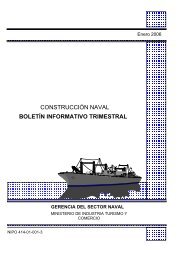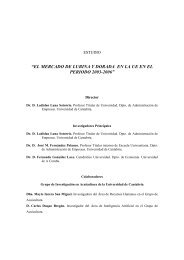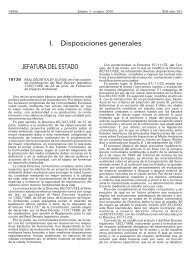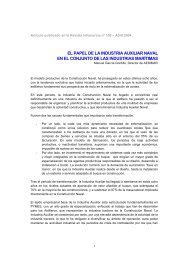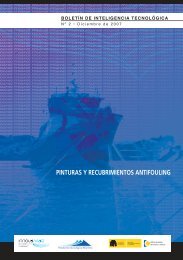The McKinsey Way
The McKinsey Way
The McKinsey Way
Create successful ePaper yourself
Turn your PDF publications into a flip-book with our unique Google optimized e-Paper software.
<strong>The</strong> <strong>McKinsey</strong> <strong>Way</strong><br />
Using the Techniques of the World’s Top Strategic<br />
Consultants to Help You and Your Business<br />
by Ethan M. Rasiel<br />
© 1999 McGraw-Hill<br />
187 pages<br />
Focus<br />
Leadership<br />
Strategy<br />
Sales & Marketing<br />
Corporate Finance<br />
Human Resources<br />
Technology<br />
Production & Logistics<br />
Small Business<br />
Economics & Politics<br />
Industries & Regions<br />
Career Development<br />
Personal Finance<br />
Self Improvement<br />
Ideas & Trends<br />
Take-Aways<br />
• <strong>The</strong> <strong>McKinsey</strong> & Co. consulting firm promotes clarity of thought and expression. Every<br />
document has to follow the MECE rule: mutually exclusive and collectively exhaustive.<br />
• When tackling a problem, write an initial hypothesis.<br />
• A wonderful business solution is useless if the company lacks the resources to<br />
follow the advice.<br />
• Eighty percent of the people in a company account for twenty percent of its productivity.<br />
• Be consistent and be a team player; hit singles, not home runs.<br />
• Managers build team spirit by treating employees with respect, particularly by realizing<br />
that employees have lives outside the offi ce.<br />
• <strong>The</strong> fi rst rule of success in a hierarchy is “make your boss look good.”<br />
• Consultants know that with research, they will fi nd that plenty of background work<br />
has already been done for them.<br />
Rating (10 is best)<br />
Overall Applicability Innovation Style<br />
7 8 7 5<br />
Visit our website at www.getAbstract.com to purchase individual abstracts, personal subscriptions or corporate solutions.<br />
getAbstract is an Internet based knowledge rating service and publisher of book abstracts. Every week, subscribers are e-mailed a short abstract of a different<br />
business book. Each abstract contains an overview of essential ideas from the entire book. Excerpts from this book are reprinted here with the permission<br />
of the publisher. <strong>The</strong> respective copyrights of authors and publishers are acknowledged. All rights reserved. No part of this abstract may be reproduced<br />
or transmitted in any form or by any means, electronic, photocopying, or otherwise, without prior written permission of getAbstract.com Ltd (Switzerland).<br />
This summary is restricted to the personal use of Guillermo Gonzalez Muñoz de Morales (lapinilla@gmail.com)
Review<br />
<strong>The</strong> <strong>McKinsey</strong> <strong>Way</strong><br />
Ethan M. Rasiel describes the problem-solving process used by <strong>McKinsey</strong> & Company,<br />
a well-known corporate consulting firm. <strong>The</strong> book offers easily digested tips.<br />
<strong>The</strong> insightful section on conducting interviews and the tips on building teamwork<br />
are particularly useful. However, because the author and other <strong>McKinsey</strong> consultants<br />
are prohibited by confidentiality agreements from discussing the specifics of their<br />
cases, the book lacks real-world examples of the firm’s problem-solving approaches.<br />
getAbstract.com recommends this book to managers seeking useful information and<br />
problem solving techniques.<br />
Abstract<br />
“You must not<br />
fear the facts.<br />
Hunt for them,<br />
use them, but<br />
don’t fear them.”<br />
“<strong>The</strong> only way to<br />
figure out if the<br />
problem you have<br />
been given is the<br />
real problem is to<br />
dig deeper. Get<br />
facts. Ask<br />
questions. Poke<br />
around.”<br />
“Most business<br />
problems resemble<br />
each other<br />
more than they<br />
differ. This means<br />
that with a small<br />
number of problem-solving<br />
techniques,<br />
you can<br />
answer a broad<br />
range of questions.”<br />
Thinking Like a Consultant<br />
Companies worldwide hire <strong>McKinsey</strong> & Company, a well-known corporate consulting<br />
firm, for its problem-solving expertise. <strong>McKinsey</strong> experts credit the firm’s success to the<br />
use of its proven guidelines for problem solving. Those guidelines include techniques<br />
you can use, including standard ways to think about problems, gather information, and<br />
present findings to clients.<br />
<strong>The</strong> first rule of <strong>McKinsey</strong>’s approach is to embrace facts. Facts are the foundation<br />
of <strong>McKinsey</strong>’s advice, partly because the company’s consultants aren’t experts in any<br />
specific industrial field. <strong>The</strong>refore, they don’t rely on intuition to guide their recommendations.<br />
Facts create credibility, a big issue to young consultants who are making<br />
presentations to skeptical executives. <strong>McKinsey</strong>’s entry-level consultants typically finish<br />
near the top of their college classes, spend a couple years at a large company, and then<br />
earn an MBA from a top university. <strong>The</strong> entry-level consultants are in their twenties, so<br />
they’re vulnerable to being easily dismissed when they make presentations to top executives<br />
of huge companies. However, they find they can build effective cases when they<br />
have a strong command of the facts.<br />
<strong>McKinsey</strong> promotes clear expression by demanding that every piece of communication<br />
follows the MECE rule, short for mutually exclusive and collectively exhaustive. “Mutually<br />
exclusive” means that each component – or issue – which makes up a problem is considered<br />
distinctly and separately. “Collectively exhaustive” means that the list of items<br />
covered thoroughly addresses the problem. Every part of a problem fits within one, and<br />
only one, of those issues. Ignoring the MECE rule leads to confused thinking.<br />
Problem Solving Techniques<br />
When <strong>McKinsey</strong> consultants tackle a new problem, they define an initial hypothesis. In<br />
other words, they come up with a solution before researching the problem. This may<br />
sound backward, but the initial hypothesis lays out a map for solving the problem. <strong>The</strong><br />
initial hypothesis isn’t the final answer, merely an educated guess that will be proven<br />
true or false during the course of the research. Using this approach, it is critical that<br />
you don’t make the facts fit your predetermined conclusion. Be willing to accept that the<br />
initial hypothesis isn’t always accurate.<br />
<strong>The</strong> <strong>McKinsey</strong> <strong>Way</strong> © Copyright 2000 getAbstract.com 2 of 5
“Honesty includes<br />
recognizing when<br />
you haven’t got a<br />
clue. Admitting<br />
that is a lot less<br />
costly than bluffing.”<br />
“At <strong>McKinsey</strong>, we<br />
found that clients<br />
were often no<br />
better at<br />
diagnosing themselves<br />
than a<br />
doctor’s patients.<br />
Sometimes, problems<br />
would come<br />
to us in extremely<br />
vague formulations.”<br />
“If all you have<br />
is a hammer, then<br />
every problem<br />
looks like a nail.<br />
Critics of <strong>McKinsey</strong><br />
(and management<br />
consulting<br />
in general) say<br />
that the Firm<br />
bases its solutions<br />
on the most<br />
current management<br />
fad – the<br />
favorite tool in its<br />
intellectual toolbox.”<br />
“Unfortunately,<br />
when academic<br />
ideals meet business<br />
realities,<br />
business realities<br />
usually win. Businesses<br />
are full of<br />
real people, with<br />
real strengths and<br />
weaknesses and<br />
limitations.”<br />
<strong>McKinsey</strong> consultants demonstrate other lessons that are useful in solving business<br />
quandaries. Remember, just because a problem is presented to you as the core issue,<br />
don’t accept that it’s the real problem. <strong>McKinsey</strong> consultants once spent several weeks<br />
working on a manufacturing company’s proposed expansion before realizing that expansion<br />
wasn’t the right answer for the company. Instead, the division in question needed to<br />
be closed or sold.<br />
Many business problems are similar enough that the same thought process can be<br />
applied to many different issues. However, that doesn’t mean that the same solution<br />
always works. For example, one <strong>McKinsey</strong> consultant says that in eighty percent of pricing<br />
problems, the solution is to raise prices. But in the other twenty percent of cases, the<br />
solution is to lower prices. <strong>The</strong>refore, when you are solving problems, do your homework<br />
and analyze the facts before reaching a recommendation.<br />
<strong>McKinsey</strong> believes in the eighty/twenty rule, which says that eighty percent of the<br />
people in a company account for twenty percent of its productivity. For example, eighty<br />
percent of a company’s sales will come from twenty percent of its salesmen, while<br />
twenty percent of an employee’s job duties will occupy eighty percent of his time. <strong>McKinsey</strong><br />
has used the eighty/twenty rule to help firms boost sales. For instance, a brokerage<br />
firm found that eighty percent of its sales came from twenty percent of its brokers. <strong>The</strong><br />
top-producing brokers handled the biggest accounts. By putting more brokers on the big<br />
accounts, <strong>McKinsey</strong> helped to boost total sales from the accounts.<br />
Keep in mind that solutions must be realistic. A wonderful solution is useless if a business<br />
lacks the resources to follow recommendations. Politics also can pose a roadblock<br />
to solutions. Addressing a business problem often means changing the status quo, and<br />
those changes usually involve internal politics. If a problem is too intractable to solve,<br />
try to redefine it so you can begin by addressing something more easily changed.<br />
<strong>McKinsey</strong> also avoids analyzing too much. Once its consultants collect enough information<br />
to support a hypothesis, they stop. This means that to work more efficiently, you<br />
should focus on the so-called “key drivers” – the most important factors that affect a<br />
business problem. Concentrating on the key drivers helps you narrow in on the meat of<br />
the problem.<br />
Solutions must be boiled down to a thirty-second sound bite, a tactic known as the<br />
elevator test. If you can thoroughly explain a product or solution in a thirty-second<br />
elevator ride, then you understand it clearly enough to sell it to your audience. For<br />
instance, the publisher of Field & Stream magazine told his sales force that they must<br />
be able to explain the publication to potential advertisers in thirty seconds. Ad sales<br />
grew as a result.<br />
<strong>McKinsey</strong> also believes in seizing small victories. If, on the way to a larger solution, you<br />
find the chance to make a simple recommendation or small improvement, do it. Such<br />
easy targets help build morale and appease clients who might otherwise grow impatient.<br />
Keep track of the things you learn during the problem-solving process by making a<br />
chart every day. This helps clarify your thinking and record your progress. As a problem<br />
solver, try to “hit singles.” In baseball terms, this means going for the consistent, effective<br />
solution, rather than trying to belt a home run. This approach instills teamwork,<br />
acknowledging that you can’t do everything yourself. One cautionary note: hitting a<br />
<strong>The</strong> <strong>McKinsey</strong> <strong>Way</strong> © Copyright 2000 getAbstract.com 3 of 5
home run can be dangerous if it gives your boss unreachable expectations about your<br />
future performance.<br />
“When you look<br />
at the boxes on<br />
an organization<br />
chart, you are<br />
really looking at<br />
people. When you<br />
move those boxes<br />
around, you<br />
change someone’s<br />
life.”<br />
“<strong>The</strong>re’s a lot of<br />
data out there<br />
relating to your<br />
problem, and a lot<br />
of analyses you<br />
could do. Ignore<br />
most of them.”<br />
“Be selective;<br />
figure out the priorities<br />
of what you<br />
are doing. Know<br />
when you have<br />
done enough,<br />
then stop.”<br />
“It’s OK for Mark<br />
McGwire to strike<br />
out a lot, as long<br />
as he keeps hitting<br />
those home<br />
runs. In the<br />
business world,<br />
though, you’re<br />
much better off<br />
hitting singles.”<br />
Another <strong>McKinsey</strong> rule is, look at the big picture. It’s difficult to keep your perspective<br />
when you’re bogged down in the details of a problem, but taking a break to re-evaluate<br />
can help you work more efficiently. Be willing to admit that you don’t know something.<br />
This honesty will do more for your credibility than bluffing.<br />
Market, Don’t Sell<br />
<strong>McKinsey</strong> prides itself on not having to sell its services. Instead of making cold calls, the<br />
company prefers to make itself known to potential clients through marketing and being<br />
available to those clients when needed. <strong>McKinsey</strong> boosts its name recognition by encouraging<br />
partners to become active in charities and cultural organizations. You can increase<br />
your profile as they do. <strong>The</strong>ir consultants speak at industry conventions, attend trade<br />
shows, socialize with potential clients, and write for trade publications, which often are<br />
willing to run guest columns from people in their industries. <strong>McKinsey</strong> consultants also<br />
are careful not to promise too much. <strong>The</strong>y divide problems into manageable chunks.<br />
Building Teams<br />
<strong>McKinsey</strong> assigns teams of consultants to client problems. <strong>The</strong> team approach provides<br />
more people to gather and analyze facts. Team-building activities are fine, if kept to<br />
a minimum. While a group dinner or ball game might help build morale, most team<br />
building happens as people work together. If you are a team leader, constantly gauge the<br />
satisfaction of your team. Offer consistent decision making, because frequent changes in<br />
direction are demoralizing and confusing. Make team members feel that their contributions<br />
are valuable and treat them respectfully. Be polite, realize employees have lives<br />
outside the office, and don’t ask them to do things you wouldn’t do yourself. To help build<br />
team spirit, get to know your team members’ interests and hobbies.<br />
Navigating Hierarchies<br />
<strong>The</strong> first rule of success in a hierarchy is: make your boss look good. To please your<br />
boss, do your job well. Keep your boss informed, but not overloaded with information.<br />
Considering yourself the boss’ equal is an aggressive approach to success in a hierarchy.<br />
One <strong>McKinsey</strong> consultant, a new employee, did this by savaging a rough draft of a boss’s<br />
book. He had a successful career at the company in spite of the risky tactic. In a meritocratic<br />
organization, such an approach can work. In a more hierarchical company, asserting<br />
equality is riskier.<br />
Doing Research<br />
Consultants know that plenty of work already has been done for them, which they can<br />
find through efficient research. To learn about a company, they begin with its annual<br />
report, and add magazine articles and scholarly papers. With computer research, consultants<br />
seek “outliers,” facts that are especially good or bad. For instance, they identify the<br />
highest and lowest sales numbers for further investigation.<br />
Conducting Interviews<br />
Interviews are essential for collecting information. Before doing an interview, prepare<br />
an interview guide with your questions and a checklist of information you’d like to glean.<br />
Start with general, innocuous questions and move toward specific or sensitive questions.<br />
<strong>The</strong> <strong>McKinsey</strong> <strong>Way</strong> © Copyright 2000 getAbstract.com 4 of 5
This helps build rapport and makes the subject more comfortable. Ask a couple of questions<br />
to which you already know the answer, so you can determine the subject’s honesty.<br />
“In the face of<br />
complexity, many<br />
hands don’t just<br />
make light work;<br />
they make for a<br />
better result.”<br />
“If you make your<br />
boss look good,<br />
your boss will<br />
make you look<br />
good. That’s the<br />
quid pro quo of<br />
hierarchy.”<br />
Take notes and don’t talk very much. Show attentiveness by nodding or offering verbal<br />
encouragement. Ask your question and then let the subject talk. If the subject rambles,<br />
redirect the conversation. To encourage someone to talk, stay silent – an awkward<br />
silence encourages people to talk. Take an interview partner to help if you’re too busy<br />
taking notes to ask follow-up questions, or if you miss verbal or physical cues. Ask openended<br />
questions, rather than queries that require only a simple “yes” or “no.” Paraphrase<br />
the subject’s answer to make sure you understood the response. Don’t be openly hostile<br />
or make the interview seem like an interrogation.<br />
Try the tactic favored by TV detective Columbo: after the interview, just before you<br />
leave, ask an important question. <strong>The</strong> subject will be more relaxed and more likely to<br />
offer helpful information. Ask if there’s anything you forgot to ask or anything the subject<br />
would like to add. Remember that an interview can be traumatic. If the subject is<br />
nervous, don’t push too hard. If a subject is hostile, inaccurate, or uncooperative, you<br />
can appeal to the person’s boss or challenge that behavior. However, if the person is<br />
a “sandbagger,” someone who rambles nonstop without regard to the interviewer’s mission,<br />
almost no strategy will help. Finally, write a thank you note to the subject of the<br />
interview. It will help smooth the way for future interviews.<br />
Presenting Ideas<br />
For a consultant, as for most managers, making a presentation is often the culmination<br />
of months of work. A good presentation is clear and logical. Fight the urge to keep working<br />
on your presentation until the last minute; perfectionism adds unnecessary stress.<br />
To avoid counterproductive objections during a presentation, tell the key players what<br />
your presentation will say in advance. This helps defuse loud protests from the audience.<br />
Finally, tell your story with simple, attractive, easy-to-understand charts. Computer<br />
graphics have made fancy, complex charts possible, but such charts are often overkill.<br />
About <strong>The</strong> Author<br />
Ethan M. Rasiel worked for <strong>McKinsey</strong> & Company from 1989 to 1992. His clients<br />
at <strong>McKinsey</strong> included major financial, telecommunications, technology, and consumer<br />
goods companies. He has a bachelor’s degree from Princeton and a master’s of business<br />
administration from Wharton. He lives in Chapel Hill, North Carolina.<br />
Buzz-Words<br />
Brainstorming / Columbo tactic / Eighty-Twenty rule / Elevator test / Initial hypothesis<br />
/ Key driver / MECE / Outliers / Sandbagger<br />
<strong>The</strong> <strong>McKinsey</strong> <strong>Way</strong> © Copyright 2000 getAbstract.com 5 of 5




